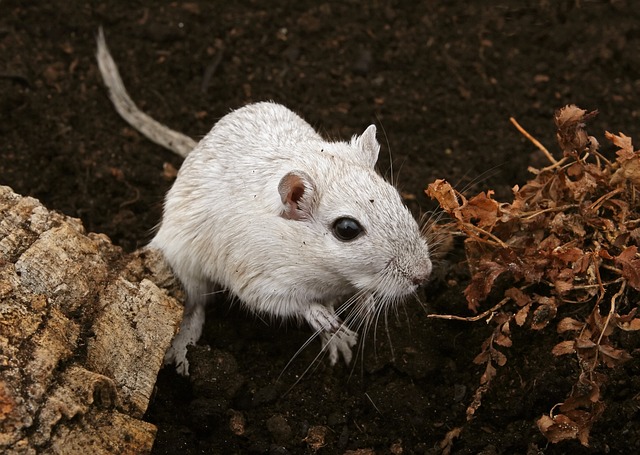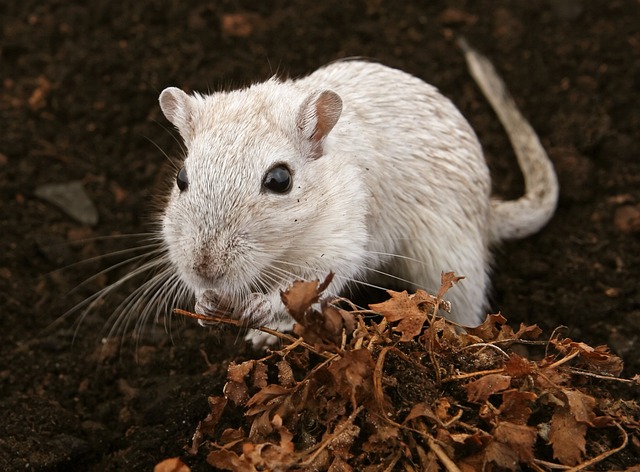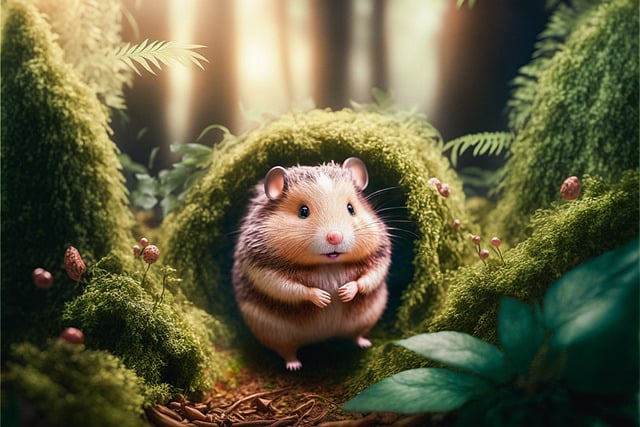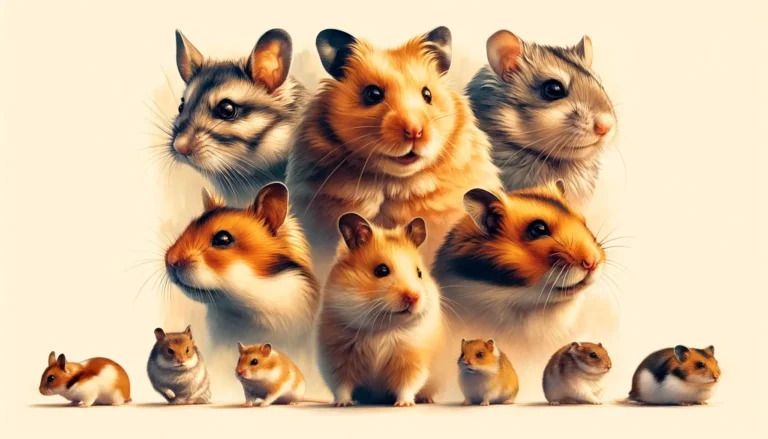Are Pet Rats Better Than Hamsters – Hamsters.pk
Intelligence and Trainability: Comparing Rats and Hamsters
When considering a small pet, many people find themselves deciding between rats and hamsters. While both can make excellent companions, there are some key differences in their intelligence and trainability that may influence your decision. In this article, we’ll explore how rats and hamsters compare in terms of cognitive abilities and their potential to learn new skills.
Rats: The Highly Intelligent Rodents
Rats are known for their exceptional intelligence, which has been extensively studied by researchers. They have a remarkable ability to learn and adapt to new situations, making them highly trainable pets. Here are some notable aspects of rat intelligence:
- Problem-solving skills: Rats are excellent problem solvers and can navigate complex mazes, demonstrating their spatial memory and cognitive flexibility.
- Social learning: Rats are social creatures and can learn from observing their peers, which is a sign of advanced cognitive abilities.
- Tricks and commands: With patience and positive reinforcement, rats can be taught a variety of tricks and commands, such as coming when called or performing agility courses.
Hamsters: Cute and Curious, but Less Trainable
Hamsters are adorable and curious creatures that can provide endless entertainment for their owners. However, when it comes to intelligence and trainability, they may not be on par with rats. Here’s what you should know about hamsters:
- Limited cognitive abilities: While hamsters are not unintelligent, their cognitive abilities are not as advanced as those of rats. They may struggle with complex problem-solving tasks.
- Solitary nature: Hamsters are solitary animals and do not have the same social learning capabilities as rats, which can impact their trainability.
- Basic tricks: With consistent training, hamsters can learn simple tricks like standing up or running through tunnels, but their capacity for learning complex commands is limited compared to rats.
The Verdict: Rats Edge Out Hamsters in Intelligence and Trainability
When comparing rats and hamsters in terms of intelligence and trainability, rats have a clear advantage. Their advanced cognitive abilities, social learning skills, and adaptability make them highly responsive to training and capable of learning a wide range of tricks and commands.
However, this doesn’t mean that hamsters aren’t worthy pets. They still offer plenty of love, curiosity, and entertainment value. Ultimately, the choice between a rat and a hamster should be based on your personal preferences and lifestyle.
Conclusion
Both rats and hamsters can make wonderful pets, but if you’re looking for a small companion with exceptional intelligence and trainability, a rat might be the better choice. Their cognitive abilities and social nature make them highly responsive to training, allowing you to form a deep bond with your pet. However, if you prefer a cute, low-maintenance pet that doesn’t require extensive training, a hamster can still be a delightful addition to your home.

Social Interaction: Which Pet Bonds Better with Their Owner?
When it comes to choosing between pet rats and hamsters, one important factor to consider is the level of social interaction and bonding you can expect from your new companion. While both rats and hamsters can make wonderful pets, there are some key differences in their social behavior and ability to form strong bonds with their owners.
Rats: Social Butterflies of the Rodent World
Rats are highly social animals that thrive on interaction with their owners and other rats. They are known for their ability to form deep, lasting bonds with their human companions. Here’s what makes rats exceptional in terms of social interaction:
- Affectionate nature: Rats are incredibly affectionate and enjoy cuddles, snuggles, and gentle play with their owners. They often seek out attention and love to be near their human friends.
- Intelligence and trainability: As mentioned in the previous article, rats are highly intelligent and trainable. This allows for more engaging and rewarding interactions with their owners, as they can learn tricks and respond to commands.
- Social hierarchy: Rats have a complex social hierarchy and communicate with each other through various means, such as vocalizations and body language. This social nature extends to their relationships with humans, making them more likely to bond closely with their owners.
Hamsters: Solitary but Still Affectionate
While hamsters are often seen as solitary creatures, they can still form bonds with their owners and enjoy social interaction, albeit to a lesser extent than rats. Here’s what you can expect from a pet hamster:
- Alone time: Hamsters are naturally solitary animals and require plenty of alone time to feel comfortable and secure. They may not seek out social interaction as actively as rats do.
- Gentle handling: With patience and gentle handling, hamsters can learn to trust and enjoy the company of their owners. They may even look forward to playtime outside of their cage.
- Individual personalities: Like any pet, hamsters have individual personalities, and some may be more social than others. Some hamsters may bond more closely with their owners, while others prefer more independence.
The Verdict: Rats Form Stronger Bonds, but Hamsters Can Still Be Loving Companions
When it comes to social interaction and bonding, pet rats have a clear advantage over hamsters. Their highly social nature, affectionate behavior, and intelligence make them more likely to form deep, lasting bonds with their owners.
However, this doesn’t mean that hamsters can’t be loving and enjoyable companions. With patience, gentle handling, and respect for their solitary nature, hamsters can still develop trusting relationships with their owners and provide plenty of joy and entertainment.
Conclusion
Ultimately, the choice between a pet rat and a hamster depends on your preferences and lifestyle. If you’re looking for a highly social, affectionate, and trainable companion, a rat may be the perfect choice for you. On the other hand, if you prefer a cute, low-maintenance pet that still offers affection and companionship, a hamster can be a wonderful addition to your home. Regardless of your choice, remember that both rats and hamsters require love, care, and attention to thrive as beloved pets.
Health and Lifespan: Assessing the Well-being of Rats and Hamsters
When considering a pet rat or hamster, it’s essential to understand their health needs and expected lifespan. Both species have unique health considerations and different average lifespans, which can impact your decision-making process. In this article, we’ll explore the well-being of rats and hamsters, comparing their health requirements and longevity.
Rat Health and Lifespan
Pet rats are generally hardy animals, but they are prone to certain health issues. Here’s what you need to know about rat health and lifespan:
- Average lifespan: Pet rats typically live between 2 to 3 years, with some individuals reaching 4 years with proper care.
- Common health issues: Rats are susceptible to respiratory infections, tumors, and dental problems. Regular check-ups with a veterinarian experienced in treating small mammals are crucial for maintaining their health.
- Preventive care: Providing a clean, spacious habitat, a balanced diet, and plenty of exercise and mental stimulation can help prevent health issues and extend a rat’s lifespan.
Hamster Health and Lifespan
Hamsters, like rats, have specific health needs and a different average lifespan. Here’s what you should consider when assessing hamster well-being:
- Average lifespan: Hamsters generally have a shorter lifespan than rats, living an average of 2 to 3 years. Some species, such as the Roborovski hamster, may live up to 4 years.
- Common health issues: Hamsters are prone to dental problems, digestive issues, and conditions such as wet tail (a bacterial infection). Regular check-ups and prompt treatment of any health concerns are essential.
- Preventive care: Providing a proper diet, a clean and safe habitat, and regular exercise can help maintain a hamster’s health and potentially extend their lifespan.
Comparing Rat and Hamster Health and Lifespan
When comparing pet rats and hamsters in terms of health and lifespan, there are a few key points to consider:
- Lifespan: Both rats and hamsters have relatively short lifespans compared to some other pets, such as cats or dogs. However, rats tend to have a slightly longer average lifespan than hamsters.
- Health issues: While both species are prone to certain health problems, rats may require more frequent veterinary care due to their susceptibility to respiratory issues and tumors.
- Preventive care: Regardless of whether you choose a rat or a hamster, providing a proper diet, clean living environment, and regular exercise is crucial for maintaining their health and extending their lifespan.
Conclusion
When it comes to health and lifespan, both pet rats and hamsters have unique considerations. Rats tend to have a slightly longer average lifespan and may require more frequent veterinary care, while hamsters have a shorter lifespan and are prone to specific health issues. Ultimately, the key to a healthy and happy pet, whether a rat or a hamster, is providing proper care, a balanced diet, and regular check-ups with a veterinarian experienced in treating small mammals. By understanding the health needs and expected lifespan of your chosen pet, you can make an informed decision and provide them with the best possible care throughout their life.
Housing and Care Requirements: Understanding the Needs of Rats and Hamsters
When bringing home a new pet rat or hamster, it’s crucial to understand their specific housing and care requirements. Providing a suitable living environment and meeting their basic needs is essential for ensuring your pet’s health, happiness, and well-being. In this article, we’ll explore the housing and care requirements for both rats and hamsters, helping you create the ideal home for your furry friend.
Rat Housing and Care Requirements
Pet rats require a spacious, well-ventilated, and stimulating living environment. Here’s what you need to know about rat housing and care:
- Cage size: Rats need a large cage with multiple levels, providing ample space for exercise, exploration, and separation of living areas. A minimum cage size of 24″ x 12″ x 18″ is recommended for a pair of rats.
- Bedding and hygiene: Provide a layer of safe, absorbent bedding material and spot-clean the cage daily. Perform a thorough cleaning once a week to maintain a hygienic environment.
- Diet and water: Feed your rats a balanced diet consisting of a high-quality commercial rat food, supplemented with fresh fruits, vegetables, and occasional treats. Provide fresh, clean water in a water bottle or bowl at all times.
- Enrichment and socialization: Rats are intelligent and social animals that require mental stimulation and interaction. Provide toys, tunnels, and climbing structures, and spend quality time with your rats daily.
Hamster Housing and Care Requirements
Hamsters have specific housing and care needs that differ from those of rats. Here’s what you should consider when setting up a home for your hamster:
- Cage size: Hamsters require a spacious cage with a solid floor, as wire floors can cause injury. A minimum cage size of 24″ x 12″ x 12″ is recommended for a single hamster.
- Bedding and hygiene: Use a safe, absorbent bedding material and spot-clean the cage daily. Perform a thorough cleaning once a week to maintain a clean living space.
- Diet and water: Provide your hamster with a balanced diet consisting of a high-quality commercial hamster food, supplemented with occasional fresh fruits, vegetables, and treats. Ensure fresh, clean water is always available in a water bottle.
- Exercise and enrichment: Hamsters are active animals that require opportunities for exercise and exploration. Provide an exercise wheel, tunnels, and chew toys to keep your hamster physically and mentally stimulated.
Comparing Rat and Hamster Housing and Care Requirements
While pet rats and hamsters have some similarities in their housing and care needs, there are notable differences to consider:
- Space requirements: Rats require larger cages with multiple levels, while hamsters need spacious cages with solid floors.
- Social needs: Rats are social animals that thrive in pairs or small groups, whereas hamsters are solitary and should be housed individually.
- Interaction and enrichment: Both species require mental stimulation and enrichment, but rats benefit from more social interaction with their owners compared to hamsters.
Conclusion
Understanding the housing and care requirements of pet rats and hamsters is essential for providing them with a healthy, happy, and fulfilling life. By offering a spacious, clean living environment, a balanced diet, and opportunities for exercise and enrichment, you can ensure your pet thrives under your care. Whether you choose a rat or a hamster, remember that each species has unique needs that must be met to guarantee their well-being. By familiarizing yourself with these requirements and dedicating time and effort to your pet’s care, you can create a loving and nurturing home for your furry companion.












